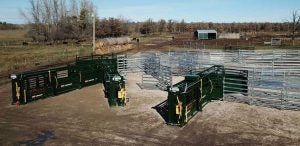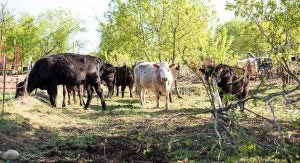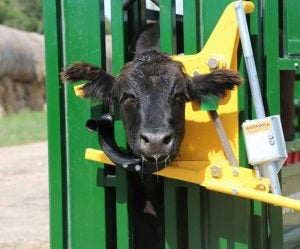It can be a challenge to find good information on how to work your cattle effectively, but don’t we all want to make life a little easier? We’ve put together techniques to help you work your cattle without the hassle, and have made it as easy as learning your ABCs. These three things can make or break your cattle handling, and are just as easy to implement as they are to remember.

Acclimation
Cattle are smart animals with strong memories, and they are highly impacted by the situations they are exposed to. A great way to keep the stress of your livestock down when working them is by acclimating cattle to your handling system. This cattle handling trick is seldom considered, but can make all the difference when it comes time to process your livestock.
To acclimate your cattle is a simple task. Open every gate and door in your handling system and allow groups of cattle to move through the system without any stops and without putting pressure on them.
Why would you want to acclimate your herd?
- Acclimating creates draw.
- Acclimating improves flow.
- Acclimating minimizes stress.
Dr. Ron Gill of Texas A&M University emphasizes the importance of acclimating your cattle not only the first time they are being worked, but any time a change of any kind is made to your system. You don’t have to work every animal to acclimate your herd, simply choose a few groups and allow them to move through the handling system without stops for a few days in a row to get them used to moving through it. This will create flow and draw when they are mixed back into the larger herd, as these animals are comfortable in the system and do not have negative first experiences associated with it.

Bunt Order
The next key to the puzzle is bunt order. This is the social organization within your herd and can make or break your handling practices, but as handlers we often work against the hierarchy rather than using it to our advantage. For more efficient cattle handling, utilizing the bunt order within your herd can be one of the most effective ways to speed up processing times without making a huge investment of time or funds.
What is the “Bunt Order” anyways?
“Cattle establish their bunt order, and maintain it, by bunting other cattle, hence the name. It’s a natural behavior, first seen in calves as they bunt their mothers’ udder to stimulate milk. Later, calves bunt the flanks of their dams during play, as they are learning social skills within the herd.
Bunting in mature cattle can be play, or an aggressive behavior used in establishing their hierarchy and social organization. Subordinate cattle may use bunting in defense from an alpha animal.” — Arrowquip Blog
You can start using cattle’s natural bunt order to make your handling simpler by:
1. Organizing cattle in smaller groups.
- Natural cattle groups tend to be smaller than those created by handlers. Large groups of cattle don’t allow enough space for subordinate cattle to avoid the alpha cattle, and can create tension during handling when they are placed in confined spaces.
2. Observing your cattle.
- When you pay attention, it’s easy to learn who is in charge within your herd. Try not to place too much pressure on these alpha cattle, or you could set off the entire herd.
3. Watching for hormonal changes.
- Bulls are dominant over cows. Cows that are in heat exhibit more dominant behavior, and those who are pregnant exhibit fewer. Watching for changes in the dominant traits of your cattle can serve as early signs of pregnancy or illness!

Cattle Chute
When it comes to handling cattle, it all comes down to what happens in the chute. The way you handle cattle in the outer pens, and low-stress cattle handling practices you implement in all aspects of your operation can quickly be undone by a negative experience in the chute.
Too often, the choice of what cattle chute to go with comes down to whatever is going to be the most budget-friendly option at the time of purchase, without consideration for how costly that “budget-friendly” equipment may be down the road. Your cattle chute is an investment in the future success of your operation, and it is important to consider the potential implications when you are researching the equipment options available to you.
When looking for a new chute, these are three things to consider that can help to make the most of your investment:
1. Look at the chute from a cow’s eye view.
- Taking a minute to walk through the chute as a cow would see it can make all the difference. When you see things from their perspective you may notice foot traps, light changes that could cause cattle to balk, and trip hazards you might not otherwise be aware of.
2. Make a list of your handling requirements.
- Do you perform AI? Look for a chute with an easy-to-use vet cage. What about a specific location for branding? Be sure to double check your access points. Are you often performing tasks such as de-horning? Head control is going to be necessary! It is important to check that the equipment you’re purchasing is suitable for your management requirements before you get it home, or it can cause many headaches!
3. Think about the help that’s available to you.
- Good help is hard to find, and it can be even harder to afford. Equipment that is designed for single-operator use can greatly benefit the way you process your cattle by allowing you to work your herd in less time, with fewer hands.
Taking the time to implement these ABCs is something that can drastically impact the effectiveness and ease of handling your cattle moving forward. For additional cattle handling tips and tricks, visit arrowquip.com/blog.
This article was published on behalf of Arrowquip.


